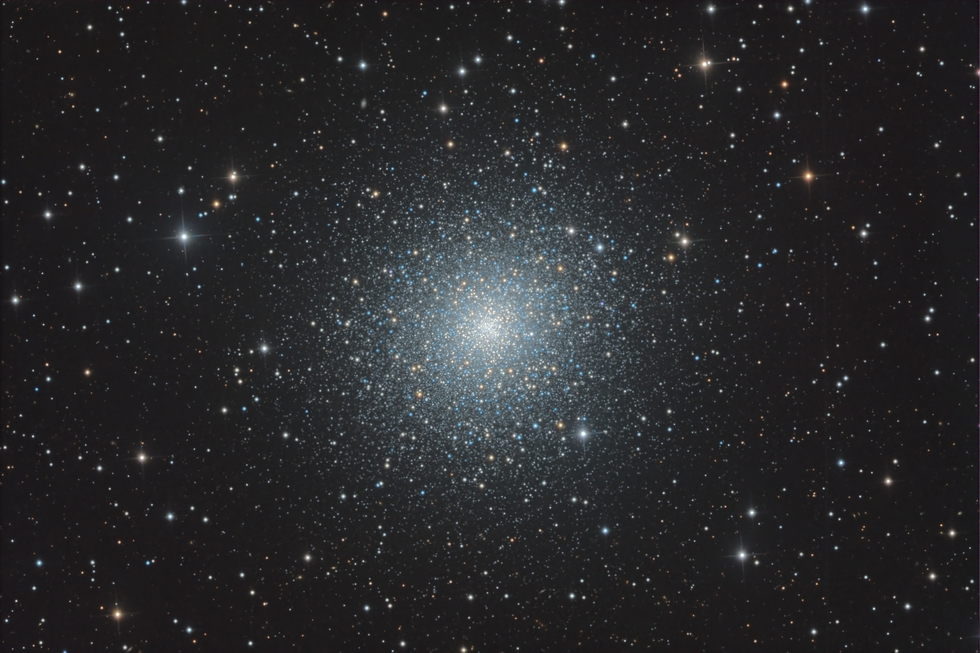Messier 2
Messier 2
Messier 2 (NGC 7089) is a globular cluster in the constellation of Aquarius, located 55.000 light-years away. It was discovered by Jean-Dominique Maraldi in 1746 and it’s one of the largest globular clusters of the galaxy, with a diameter of nearly 180 light-years. It has an apparent magnitude of +6,5 and an estimated age of 12,5 billion years old.
Maraldi was searching for comets when he discovered this cluster, being accompanied by Jacques Cassini at the time of the finding. Charles Messier also observed it in 1760, but he though it’s a starless nebula. It was in 1783 when William Herschel was able to individually solve stars in M 2.
M 2 is a rich cluster, with a very busy center and an easily visible flattening. Here we can find 150.000 stars, including 21 variable stars. The average spectral class of the stars is F4, proof of their advanced age. M 2 is part of the Gaia Sausage, a remnant from a dwarf galaxy merged with the Milky Way.
M 2 is connected to a filament of stars 300 light-years long, most likely formed by the gravitational influence of the Large Magellanic Cloud.
Maraldi was searching for comets when he discovered this cluster, being accompanied by Jacques Cassini at the time of the finding. Charles Messier also observed it in 1760, but he though it’s a starless nebula. It was in 1783 when William Herschel was able to individually solve stars in M 2.
M 2 is a rich cluster, with a very busy center and an easily visible flattening. Here we can find 150.000 stars, including 21 variable stars. The average spectral class of the stars is F4, proof of their advanced age. M 2 is part of the Gaia Sausage, a remnant from a dwarf galaxy merged with the Milky Way.
M 2 is connected to a filament of stars 300 light-years long, most likely formed by the gravitational influence of the Large Magellanic Cloud.
SPECIFICATIONS
Telescope
Planewave CDK 24"
Camera
QHY 600M
Location
El Sauce, Chile
Date of observation
Juen 2023
Filters
LRGB
Processing
PixInsight



